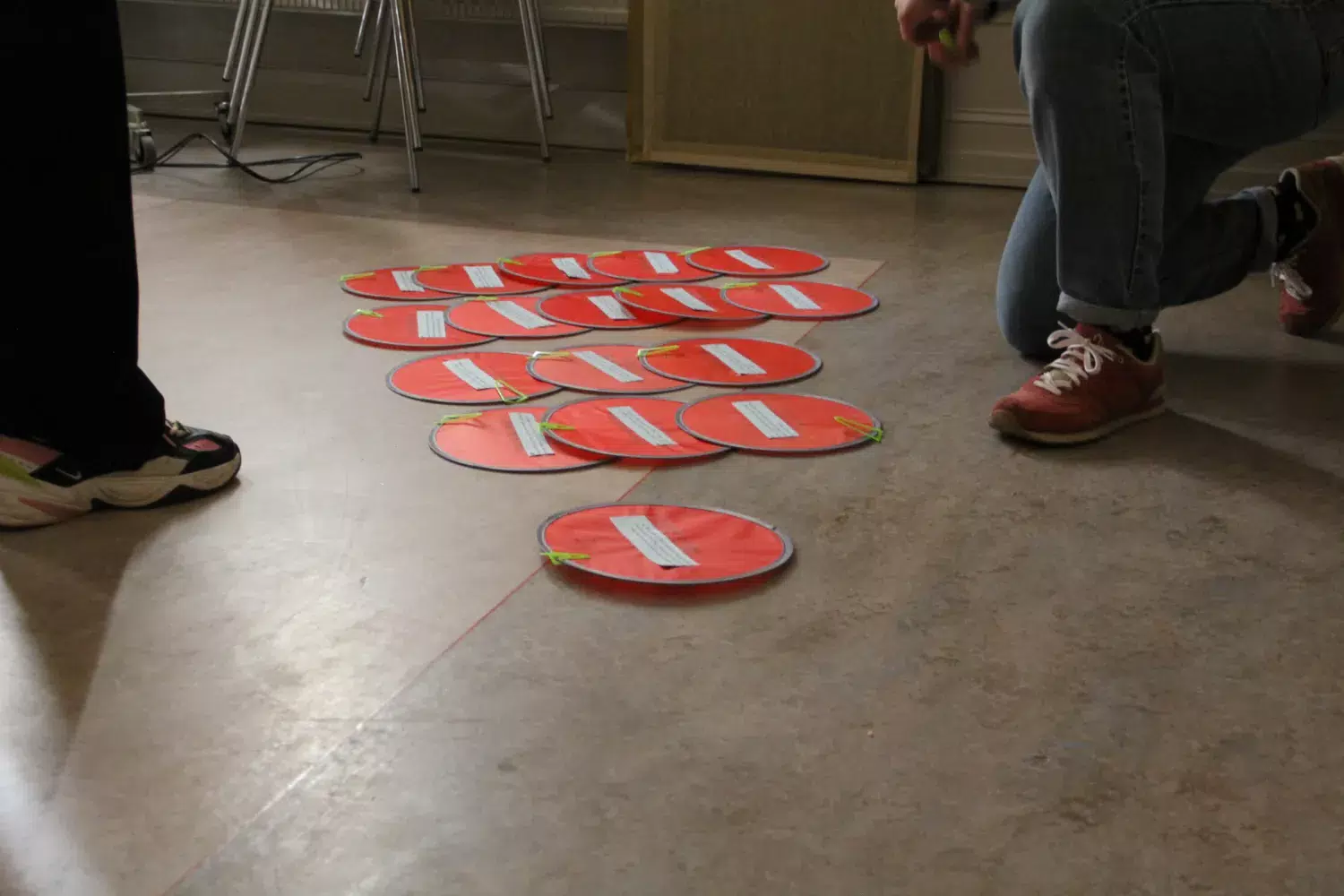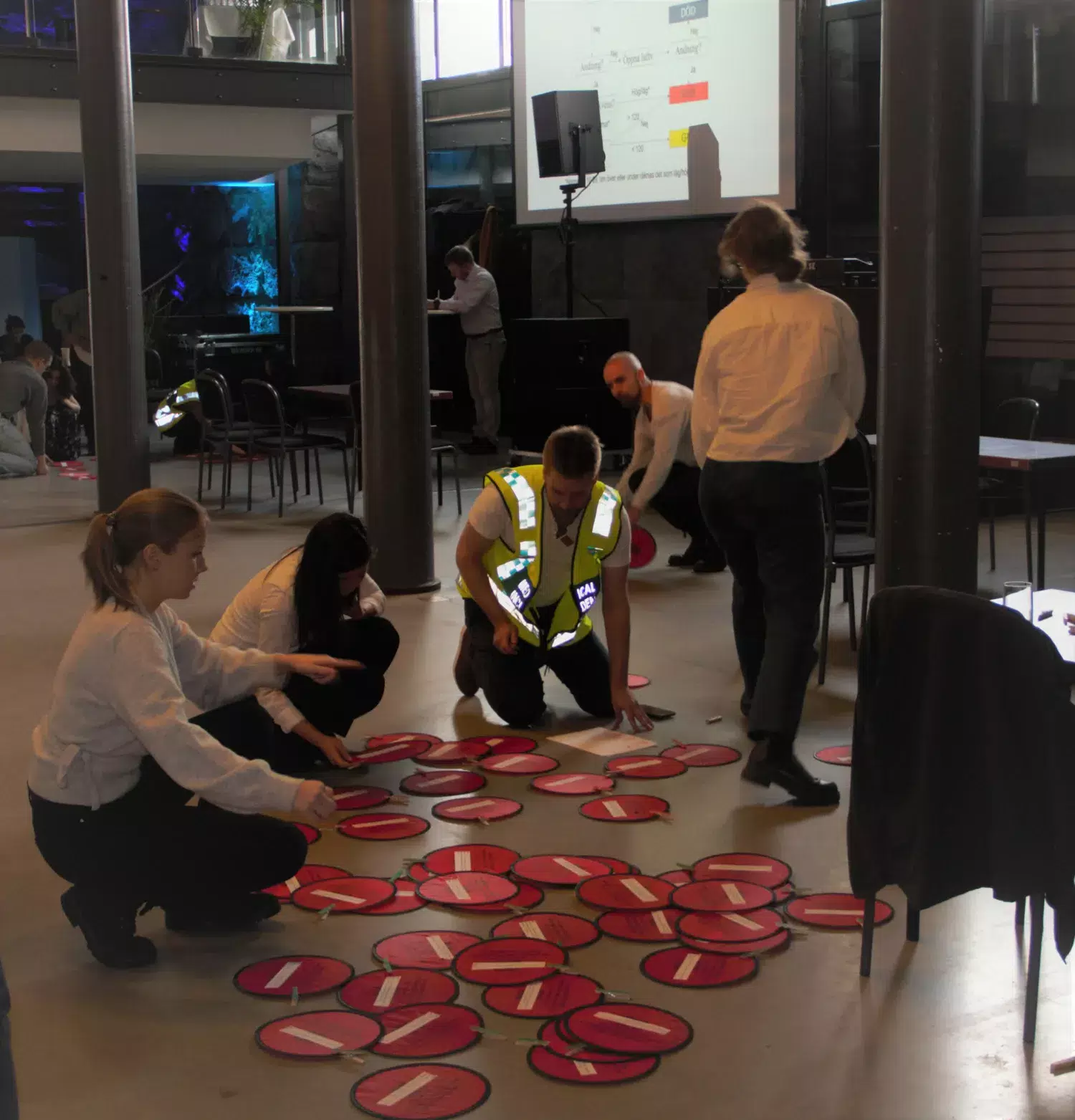General physicians practise handling mass casualty events

The large hall at Münchenbryggeriet in Stockholm was buzzing with life on Friday morning 12 April when general physicians from all over Sweden practiced mass casualty management and triage, using the simulation exercise AnTriEx, which is developed and instructed by the research group Global Disaster Medicine - Health Needs and Responses at KI.

AnTriEx is an abbreviation of Analogue Triage Exercise. It is a simulation exercise, meaning that it is an exercise where the participants practise handling a simulated mass casualty event in the most realistic way possible. With AnTriEx, participants do not primarily practice diagnosis and treatment of patients, but rather focus on organisation, communication, leadership, decision-making and prioritisation among many casualties.
Before the exercise begins, participants are given a brief presentation of what mass casualty events and their management entail, and what triage systems can look like. Triage is a prioritisation system that is based on an assessment of the injured person's acute condition and on whether they can walk, whether their breathing pulse and blood pressure is affected. The purpose of the tool is to create a sequence where the most severely injured are treated first, and to maximise the effectiveness of limited resources.
Noise and frisbees symbolising patients
After the short theoretical introduction, the exercise begins, and participants are told that they will be the first to arrive at a remote location where a major road accident with many casualties has occurred. The injured are symbolised by a large number of frisbees, which are scattered on the floor. On each frisbee there is a brief description of the casualty and their condition, including pulse and respiratory rate. Noise from the disaster scene, such as crashing cars, screams and sirens, emanate from loudspeakers as the lights dim.
It then becomes the group's task to organise the scene together, triage the patients, communicate with the emergency services about which resources, such as ambulances and helicopters, will arrive at the scene and when, prioritise which patients should be transported first, who needs a helicopter, and manage the general chaos at the scene. As if dealing with the injured wasn't enough, others arrive at the scene: worried relatives, journalists, passers-by who want to help, and more - all played by staff from Global Disaster Medicine.
Afterwards, the group debriefs and discusses how the exercise went, what went well and what was challenging. The group is then given the chance to carry out the exercise again, before everyone comes back together for a review of lessons learnt and reflections on the exercise.
A relevant and educational exercise
The purpose of the exercise on 12 April was to expose participants to a way of thinking when needs exceed available resources. The exercise not only gives participants the chance to practice a triage system, but also, on a small and controlled scale, to get a feel for what a mass casualty situation looks like and to understand the importance of communication, management, and prioritisation.
After the intensive exercise, the participants were satisfied, and many thought the exercise was relevant given the current situation here and around the world. Or as one participant put it in the anonymous evaluation afterwards:
– "Very instructive and useful, especially now that total defense is being rebuilt!".
Global Disaster Medicine regularly conducts both AnTriEx exercises and the digital version of the exercise, called ViTriEx. If you are interested in finding out more, visit their website or email the group.
